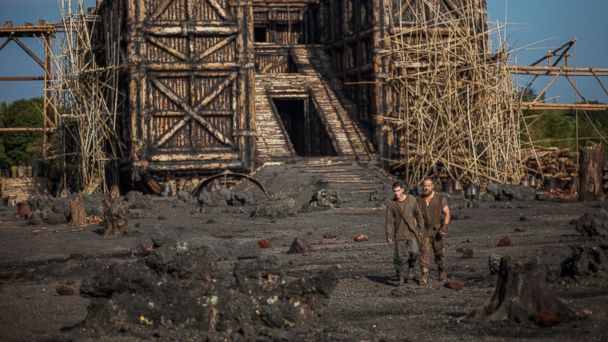'Noah' Designer: Ark Made of Straw, Volcanic Rock 'Was Built to Survive'

Paramount Pictures
Early critics may have taken swipes at the epic film "Noah" for veering too far from the biblical version but you can't accuse the filmmakers of not having gone the extra mile to create a realistic ark as Noah would have.
Darren Aronovsky, the director of "Noah," which cost $125 million to make, said he used the Book of Genesis as a blueprint.
Related: Jennifer Connelly: "Noah" is "true to the spirit of the Bible."
The mammoth ark was built in Oyster Bay, N.Y., and while it's not pretty, it's tough. The ark even withstood Superstorm Sandy when it slammed the shores of Long Island during filming.
"This thing was built to float. It wasn't built to be looked at. It wasn't even built to be painted. It was built to survive," said Mark Friedberg, the movie's production designer.
The ark seen on screen is nearly 2.5 city blocks long. It took Friedberg and his team more than a year to design and nearly six months to build, using materials like twigs, straw and even volcanic rock.
"Our version of it goes 165 feet, in our reality," Friedberg said. "We will extend it digitally to be about 500 feet."
According to the story, Noah brought two of every creature onto the ark. In a featurette released by Paramount, Freidberg described the ark's basic construction.
"The ramp is meant to serve one function, for reptiles to be able to get up there, for mammals to be able to get in there and for birds to fly up the top," he said.
Friedberg said the ark would not be anything without Noah, played by Oscar-winner Russell Crowe.
"I think when Russell came out and the ark stopped being my ark - and it became Noah's ark - was the big moment for me," Friedberg told ABC News.
Crowe described seeing Friedberg's creation in the featurette.
"The first time I came out for the exterior ark stuff, I saw the ark just lifting out of the ground, you know, cause you see pictures and stuff. It's all a different experience," he said.
The movie that hits theaters on March 28.
ABC News' Tess Scott and Jenn Metz contributed to this story.